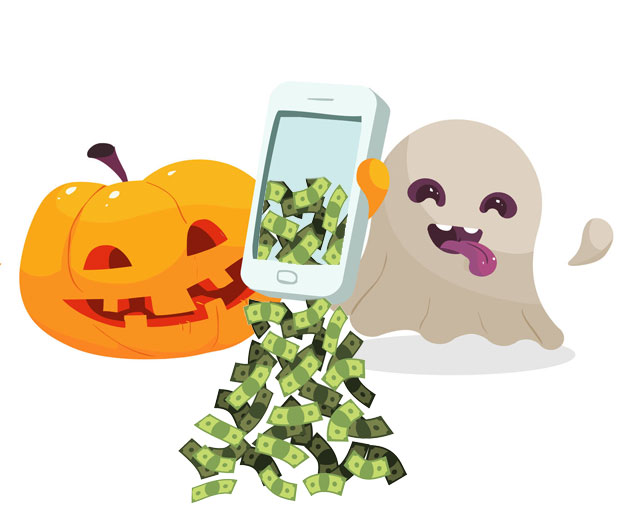
Thanks to advances in artificial intelligence, deep learning and user interfaces, our mobile devices are more accessible and user-friendly than ever before. People are downloading more apps and spending more time in those apps. There are now over four million apps in the Apple and Google app stores – Apple received 75,000-80,000 app submissions per month in last few months.
While this is great for consumers, it’s become much harder for app publishers to gain traction and actually make money through their apps. As venture capitalist Josh Kopelman wrote almost a decade ago, the penny gap – “getting your users to pay you anything at all” – is the highest hurdle for any venture to overcome. The rise of the “try before you buy” trend in app stores only makes matters worse.
The good news is there are a number of monetization strategies for app publishers to keep in their arsenal.
1. In-app Revenue
While nothing new, in-app purchases and advertising remain paramount for monetization.
In-app purchases are based on the premise that if a user enjoys using an app, they are more likely to buy things within it. For gaming apps, such purchases might allow users to unlock new levels or content, exchange virtual goods and services, gain more advanced capabilities, more playing time or more lives.
In-app advertising grew by 66 percent to $21 billion in 2016 and is expected to grow to $35 billion over the next years.
- Banner ads are the least invasive kind, as users can view them without halting their activity in the app.
- Interstitial (full-screen) ads can yield 5-10 times the per-click revenue as banner ads, however, they must be displayed at the right time. For example, with gaming apps, an optimal time would be after a user completes a level or upon exiting the app.
- Video ads are most effective when their content is authentic, entertaining, emotional and relatable. Users may prefer video ads that play with the sound turned off. Rewarding users with in-app credits for watching a video add is also successful in gaming apps. Vertical video ads in Snapchat and Instagram take advantage of the vertical form factors and stand out from competing ad providers.
- Other rising in-app advertising trends include native advertising, augmented reality geofilters, and object recognition in ads.
While in-app advertising can provide speedy monetization, it can also decrease app retention rate if used improperly. Regardless of which kind you use, make sure to do so strategically and creatively.
2. Charging for apps
As I mentioned previously, the penny gap is the most difficult hurdle to jump in terms off revenue. Considering 95 percent of apps are free to download, it’s especially hard in the app store. However, there are mobile users who will pay up for higher quality niche apps that cater to a very specific need – some niche apps can charge as much as $999 per download!
While such a price point is a fantasy for most app publishers, an alternative solution would be to offer two options – a free,ad-supported version alongside a paid, ad-free one.
3. Sidestepping Ad-blockers
Mary Meeker’s 2016 Internet Trends Report revealed that 400 million mobile users globally block mobile ads and is expected to grow. A way of reaching audiences is to bypass ad network entirely, by way of:
- Sponsorships: For example, Nike placing ads directly in the Weather Channel app, offering suggestions for weather apparel based on local weather conditions.
- Partnerships and Affiliations: For example, Uber and Pandora recently formed a partnership that enables Uber drivers to play music from Pandora, and a Nikon Lenses app has affiliations with lens renters to give photographers more access to professional equipment.
4. Enhancing Discoverability
It goes without saying that the easier it is for people to find your app, the more likely you are to acquire users.
First and foremost, let’s talk about App Store Optimization(ASO). In Apple's App Store, over 65 percent of apps are discovered via explicit searches. In order to increase discoverability within the app store, your app name and description must include strong, relevant keywords and graphics.
Search ads, announced by Apple in June 2016, also help promote apps in relevant search results. Relevance is determined by app developer provided metadata (title, keywords, description, reviews, ratings, install- and uninstall-rate, ad click-rate, etc.), and users are targeted based on geography, gender and age. In order to take full advantage of search ad exposure, app developers must set aside budget for improving their metadata and bidding on cost per tap (CPT) and cost per acquisition (CPA).
Many publishers focus on promoting their app within the app store, but you must remember to think outside the box – literally. As much as 35 percent of apps are discovered outside the app store, through advertising on the web and other apps, maintaining presence on the web, social media advertising, public relations and brand building, as well as content, influencer and word-of-mouth marketing.
5. Auto-renewable Subscriptions
The introduction of auto-renewal subscription model has the potential to make indie app development far more sustainable, as it gives users the full functionality of a product without having to “own” it. The subscription model works particularly well for apps that provide access to content, news and editorial articles, media, regularly updated features or any app that relies on a backend service.
Apple pays 70 percent of revenue to developers in the first year and 85 percent after one year for lapse-free subscriptions (excluding a 60-day grace period), Google also announced 85 percent payout to developers for subscriptions.
No comments:
Post a Comment